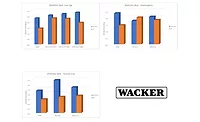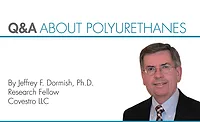Formulating with Flexibility
Finding solutions to meet ever-evolving demands encourages flexibility and collaboration with suppliers, formulators and customers.

credit: sanjeri / E+ / via Getty Images
More than any single piece of lab equipment, a successful R&D team’s most vital tool is a flexibility mindset. Market demands continue to push developers and formulators to stretch the boundaries of what is achievable. In addition, customers are creative and don’t always evaluate or use products in the way they were originally intended.
Though powerful and necessary, diligent lab work and experience also aren’t always enough to enable a development team to find the best answer to a formulation problem. Finding innovative solutions to meet numerous ever-evolving demands encourages collaboration throughout the supply chain, from suppliers and formulators to customers, while lack of internal expertise or resources often prompts companies to seek third-party development assistance. Commercial success requires flexibility, as well as technical excellence.
Finding Innovative Solutions
I’ve had the privilege to work with many top-notch R&D teams throughout my career. We navigated numerous challenges by keeping our minds open to a broad range of new ideas and processes.
Hot-Melt Adhesive
My team was once confronted with reports of a hot-melt adhesive’s disagreeable odor, which pushed us to quickly gain competencies in odor analysis. We initially (and naively) hoped that we could simply correlate volatile compounds in a gas chromatograph (GC) with a mass spectroscopy detector.
However, we realized that the perception of odor is subjective and influenced by local culture, food preferences, and an individual’s ability to perceive odor. We of course reviewed manufacturing processes while attempting to solve the problem, but we also set up odor panels and brought our suppliers into the discussion.
The final formulation represented the sum of all changes, delivering a new adhesive with an acceptable and consistently lower odor level. At the same time, we were able to meet the specifications and requirements for the incoming raw materials, production methods, and outgoing finished goods.
Waterborne Adhesive
Working to introduce a waterborne adhesive to an Asia-based shoe company, my team was confident that we fulfilled the requirements for bond strength, open time, and efficiency based on our lab work. After a line trial, we met with management to validate our success.
While the management team confirmed our findings, they shared a surprising observation from the folks on the factory floor who were applying the adhesive and assembling the shoes: the smell of the waterborne adhesive was not as pleasant as the incumbent solventborne product. From the comfort of our meeting rooms, we never would have predicted the end users’ strong preference for the solvent’s smell.
We reviewed the feedback and reinforced the benefits of waterborne over solventborne adhesives for the environment and the workers. We opened lines of communication and demonstrated that the advantages of the new formulation clearly outweighed the attraction of the solventborne adhesive’s smell. Conversion was eventually successful, with the support and insistence of the customer’s management team.
Photopolymer Resins
The long-term stability of end-use parts produced from formulated photopolymer resins is a growing requirement in additive manufacturing (AM), a field that clearly demonstrates the benefits of flexibility in formulation development. In fact, many of the most recently commercialized photopolymer formulations are a promising third generation of AM raw materials.
Representing the first generation, photopolymers based on acrylates were introduced in the 1980s. However, they suffered shrinkage problems that challenged the users’ ability to easily create accurate parts. The second generation, epoxy-based photopolymers introduced in the 1990s, suffered continuing polymerization that resulted in embrittlement after parts were printed.
Continued development work to meet evolving AM industry expectations encourages collaboration and the exploration of new sets of monomers and oligomers. As formulations improve, the long-term stability of AM-produced parts increases — as does the number of feasible applications — and market opportunities and volumes likewise expand.
Building Flexible Teamwork
Growing market and customer expectations drive formulators to develop new and novel solutions. Often, these solutions can only be realized through collaboration and communication all along the supply chain, from suppliers to developers and customers.
At the same time, formulation development in today’s CASE sector is hindered by lost expertise, as experienced personnel retire and restructuring efforts lead to reductions in knowledgeable staff. Partnering with an experienced third-party development team can bolster internal R&D teams, providing the necessary new perspectives and expertise to take a formulation to the next level. Whatever their makeup, winning product development teams are fast and flexible, leveraging their experience and industry connections, listening to customers, and engaging their suppliers.
For more information, contact the author at ehortelano@chemquest.com or visit chemquest.com.
Looking for a reprint of this article?
From high-res PDFs to custom plaques, order your copy today!





